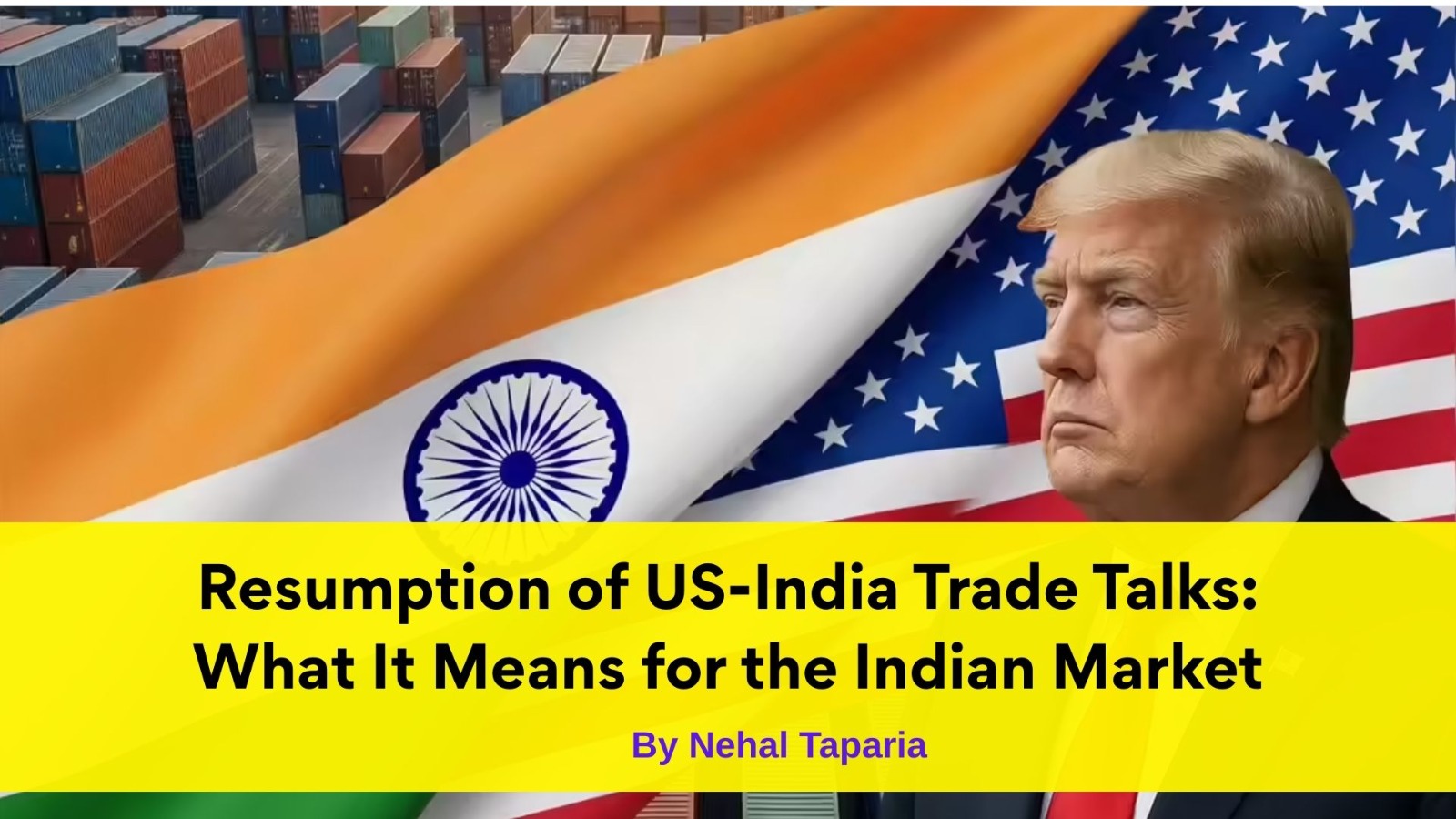Resumption of US-India Trade Talks: What It Means for the Indian Market

Resumption of US-India Trade Talks: What It Means for the Indian Market
Introduction
After months of escalating trade tensions, U.S. President Donald Trump and Indian Prime Minister Narendra Modi have signaled a thaw in relations, announcing the resumption of trade negotiations between the two nations. This development comes after the U.S. imposed a 50% tariff on Indian goods, prompting India to implement domestic reforms like GST 2.0 to mitigate the impact.
Key Highlights
Optimism from Both Leaders: President Trump expressed confidence in reaching a successful trade deal, stating he looks forward to speaking with Prime Minister Modi in the upcoming weeks.
India's Stance: Prime Minister Modi emphasized that India and the U.S. are "close friends and natural partners," with teams from both countries working to conclude trade discussions promptly.
Trade Deficit Concerns: The U.S. seeks to address a significant trade deficit, with two-way goods trade totaling $129 billion in 2024.
Impact on the Indian Market
Exporters' Relief: The resumption of talks may lead to the reduction or removal of the 50% tariff, providing relief to Indian exporters, especially in sectors like textiles, leather, and chemicals.
Currency Stability: Positive developments in trade negotiations could bolster investor confidence, potentially leading to a stabilization or appreciation of the Indian Rupee against the U.S. Dollar.
Sectoral Implications: Industries heavily reliant on exports to the U.S., such as agriculture and manufacturing, stand to benefit from improved trade relations.
Policy Reforms: India's proactive measures, like the implementation of GST 2.0, demonstrate the government's commitment to economic reforms, which may enhance the country's appeal to foreign investors.
Conclusion
The resumption of trade talks between the U.S. and India marks a significant step towards resolving trade disputes and enhancing bilateral relations. The outcome of these negotiations will have far-reaching implications for various sectors of the Indian economy. Both nations appear committed to finding mutually beneficial solutions, signaling a positive trajectory for future trade relations.
By Nehal Taparia
This content is for educational and knowledge purposes only and should not be considered as investment or Trading advice. Please consult a certified financial advisor before making any investment or Trading decisions.
Our Recent FAQS
Frequently Asked Question &
Answers Here
Q1: What prompted the resumption of US-India trade talks?
The resumption follows months of escalating trade tensions, including the U.S. imposing a 50% tariff on Indian goods. Both leaders have expressed a desire to resolve these issues amicably.
Q2: How will this affect Indian exporters?
Q3: What is the expected timeline for concluding the trade negotiations?
Q4: Will this impact other trade agreements India is pursuing?
Q5: How should investors respond to this development?
Copyright © By Empirical F&M Academy. Design & Developed by Techno Duniya


.jpg)


.jpeg)




